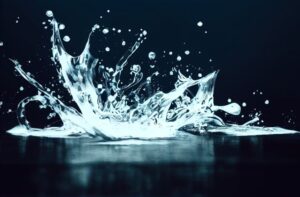How Do Water Softeners Work?
Water softeners are a popular choice for homeowners looking to protect their homes and family from the damaging effects of hard water. Hard water can cause dry skin, scale build-up on appliances and water heaters, lowered pressure, and endless appliance repair bills.
(Looking for Montana water filtration maintenance? Contact us today!)

There is no one size fits all solution to the problem of water, which is why it’s important to work with your local water experts to determine the best system for your unique needs and environment. They can perform a test on your water to determine the hardness level and prescribe a system that is most effective for you.
The basic work of a water softener is to remove the calcium and magnesium ions that cause hard water through a process called ion exchange. During this process, sodium is introduced into the water and the resin beads within the media tank exchange their negative charges for positive sodium.
Ion exchange is a common industrial method of removing hard minerals and can be applied to remove iron also. However, the amount of sodium that is added to softened water is usually very small and not at all harmful to humans or animals.
When a water softener is in operation, it collects calcium and magnesium from your home’s water supply. From time to time, the water softener will flush these hard minerals away through a drain located on the back of the unit.
In this way, the resin tanks in your softener’s tank are cleaned and recharged, ensuring that they can continue to remove hardness from your water for as long as possible. Most systems will have a meter in their control valve that will judge when to regenerate.
During regeneration, the salt that is dissolved in the brine tank is used to clean out the resin beads, which allows the system to continue providing soft water for your family. This process also provides the sodium that is needed to complete the ion exchange.
The amount of sodium that is released during this process is not at all harmful to human or animal health and can be a source of essential vitamins. In fact, most of the sodium in softened water is less than 2% of the recommended daily intake.
Another benefit to using a water softener is that it does not create any salty waste for your plumbing system, unlike some other water conditioning systems. If you have a well, it is wise to install a sediment filter in front of your water softener to prevent the clogging of your pipes that occurs when the softener’s waste goes into the well.
A water softener is a convenient, cost-effective solution for addressing hard water in your home. It not only prevents the damage caused by hard water, but it can also improve your skin and hair, reduce laundry detergent costs and extend the life of your appliances.
There are several types of water softeners available on the market, but they all share one thing in common: They all replace the ions that cause hardness with sodium ions. Sodium ions are able to dissolve and replace the metal ions that makeup calcium and magnesium, without the same damaging effects. The most commonly used type of water softener is the ion exchange system. It is very familiar to homeowners, and it includes a large tank filled with salt pellets.

